“Unlimited” sounds simple. Reality isn’t. UC&C spending hit about $69 billion in 2024, so more teams now move voice to IP and hunt for predictable billing. Meanwhile, the UK’s copper PSTN dies by January 31, 2027, another shove toward SIP trunks and cloud telephony.
That surge creates a common trap: many read “unlimited” as infinite minutes and infinite capacity. Providers rarely mean both. Fair-use caps, channel limits, routing choices, and hidden surcharges still decide your real bill and call quality. Finance wants forecasting. Network teams want uptime. Legal wants compliance. Everyone wants clarity.
This guide compares unlimited SIP trunking services and providers and explains pricing and features of unlimited SIP trunking without fluff. You’ll see what “unlimited” actually means on paper and on the wire. You’ll also get a simple cost model, a testing plan, and a scorecard to choose a fit for your PBX or UC platform.
What “Unlimited” Actually Means in SIP Trunking
The Technical Reality
“Unlimited” can describe either minutes or channels, but rarely both. Unlimited minutes usually mean you can place as many calls as you want, within fair-use limits, while unlimited channels refer to how many concurrent call sessions you can run at once. The confusion often starts here.
Each active call consumes one channel and a share of available bandwidth. For example, a G.711 codec uses about 85 kbps per direction, so ten concurrent calls consume roughly 1.7 Mbps of sustained bandwidth. Add signaling overhead, encryption, and QoS tagging, and your “unlimited” plan still depends on network capacity and codec choice.
A company with ten channels can handle ten simultaneous calls. It can make ten calls all day if the provider allows unlimited minutes, but once an eleventh call attempts to connect, it queues or fails. That’s why “unlimited” minutes don’t mean unlimited concurrency. Real scalability comes from flexible trunk allocation, not from the marketing label.
Policy & Fair-Use Limitations
Most carriers enforce fair-use policies, even for “unlimited” plans. Typical limits include:
- Minute thresholds: 3 000 – 5 000 outbound minutes per channel per month.
- Auto-dialer restrictions: outbound pacing caps to prevent bulk traffic or predictive dialing abuse.
- Destination exclusions: premium, mobile, or international routes billed separately.
- Concurrent-call caps: defined per plan or per PBX license.
Providers impose these limits to control termination costs, deter fraudulent use, and maintain stable routing for all customers.
Unlimited never means infinite, always check for per-minute soft caps, excluded destinations, and auto-dialer clauses before signing.
Unlimited vs. Metered Models: Real Cost Difference
Consider a business using 50 000 outbound minutes a month across ten channels.
- Metered plan: $0.012 per minute × 50 000 = $600
- Unlimited plan: $25 per channel × 10 = $250 flat
Here, unlimited saves roughly $350 monthly, assuming usage stays high and stable.
But for lighter traffic, say 10 000 minutes, the metered option costs only $120, far cheaper than a fixed $250 flat rate.
Takeaway: Unlimited SIP trunking makes financial sense when outbound volume is heavy and predictable. For low or variable traffic, a metered plan, or a hybrid model combining unlimited domestic with metered international, delivers better value.
Types of Unlimited SIP Trunking Plans
Unlimited SIP trunking isn’t a single model, it’s a pricing style applied to different call directions and coverage regions. Understanding which plan matches your traffic pattern prevents paying for capacity you’ll never use.
Outbound-Only Plans
An unlimited outbound plan covers calls from your PBX to external numbers, typically within one country or region. Domestic outbound traffic, such as calls from U.S. offices to U.S. landlines or mobiles, is included, while international routes remain metered.
These plans suit:
- Sales and support teams that place thousands of outbound calls daily.
- Call centers running predictable campaigns with local or national reach.
- Businesses with low inbound volume but high outbound engagement.
Outbound unlimited plans often include per-channel fair use, for example 3 000–5 000 minutes monthly, with the option to add international minute bundles separately.
Inbound-Only or Toll-Free Unlimited
Inbound-focused plans cover calls to your DID or toll-free numbers. They’re common among customer service operations or help desks that primarily receive calls.
- Inbound unlimited typically applies to geographic numbers (e.g., +1 US local numbers or +44 UK local DIDs).
- Toll-free unlimited covers inbound 800/888 (US) or 0800 (UK) numbers but at higher base cost due to inbound origination fees.
For example:
- In the U.S., inbound local minutes can be truly flat-rate under SIP trunks, while toll-free inbound often costs $0.02–$0.04/minute unless bundled.
- In the U.K., inbound local is free, but 0800 toll-free calls are charged back to the business at around £0.03 –£0.05/minute depending on volume.
Such models benefit companies prioritizing accessibility and customer convenience, especially where inbound call quality and cost predictability matter more than outbound flexibility.
Fully Unlimited (Bidirectional)
A fully unlimited plan covers both inbound and outbound domestic traffic under one contract. These are usually enterprise-grade offerings designed for organizations handling balanced communication flows, support, sales, and internal collaboration under a single SIP trunk.
Although marketed as “all-inclusive,” most still:
- Meter international destinations, applying per-minute rates outside the included zone.
- Exclude premium or mobile prefixes in certain countries.
- Set fair-use thresholds per channel to prevent abuse.
They’re ideal for distributed teams or companies unifying PBX, contact center, and UC traffic under one predictable bill.
Regional or Tiered Unlimited
Some providers offer regional or tiered unlimited bundles grouping multiple countries under one flat rate. This approach allows businesses with multi-country operations to scale without managing dozens of separate trunks.
| Region / Plan Type | Included Destinations | Typical Monthly Cost (per channel) | Notes |
| US / Canada Unlimited | USA & Canada domestic | $20 – $30 | Most common, often true flat-rate |
| EMEA Unlimited | 25–40 European countries | $35 – $60 | Excludes mobile and premium routes |
| APAC Regional | Australia, Singapore, Hong Kong | $40 – $70 | Usually fair-use based |
| Global Tiered | 60+ countries | Custom pricing | Requires enterprise contract & compliance vetting |
Takeaway: Selecting the right plan type isn’t about chasing the biggest “unlimited” label, it’s about aligning coverage, direction (inbound/outbound), and call mix with actual business use.
Key Evaluation Criteria for Unlimited SIP Trunk Providers
Choosing an unlimited SIP trunk provider isn’t just about price, it’s about consistent performance, security, and reach. A strong provider architecture ensures calls stay clear, compliant, and uninterrupted, even under high load.
Network Reliability & Call Quality
Voice quality depends on more than internet speed. Core network design, global presence, and codec optimization all shape the experience. Look for providers with:
- Uptime SLAs of 99.99% or higher.
- Global PoPs (Points of Presence) near your offices to reduce packet travel distance.
- Direct interconnects with Tier-1 carriers, avoiding least-cost routes that degrade quality.
Performance metrics that signal healthy trunks include:
- MOS (Mean Opinion Score) above 4.0
- Latency under 150 ms
- Jitter below 30 ms
Providers such as DIDlogic maintain redundant routes across regions, minimizing single-carrier dependency. Before signing, ask for route diversity details and a recent quality-of-service (QoS) report.
Scalability & Channel Expansion
Traffic rarely stays constant. Seasonality, marketing campaigns, or new product launches can double call volume overnight. That’s where elastic SIP trunking matters, allowing channels to expand or contract on demand.
Leading carriers like DIDlogic dynamically allocate trunks within seconds, eliminating manual provisioning delays. For example, a retail brand can scale from 50 to 150 active channels during a holiday campaign and revert after. This flexibility prevents overpaying for idle capacity while protecting uptime during peaks.
Security & Compliance
Unlimited outbound capacity can attract fraud attempts. Every trunk handling high-volume traffic needs layered protection:
- TLS/SRTP encryption to secure signaling and media.
- IP whitelisting to restrict unauthorized access.
- Real-time fraud detection to stop suspicious call bursts.
- SOC 2 and HIPAA-aligned data controls for compliance-sensitive environments.
Toll-fraud cases often start with compromised PBXs running unmonitored auto-dialers. A reliable provider should offer account-level spend limits, alerting, and per-destination call blocking.
Geographic Coverage & Number Availability
Comprehensive DID provisioning enables local presence in every key market. Evaluate how many countries a provider supports for:
- Local and toll-free number availability
- Instant or near-instant activation
- Number portability with minimal downtime
Look for built-in number management tools that let teams assign, tag, and release DIDs without tickets.
Regulatory requirements also differ by country. For example:
- The EU enforces Know-Your-Customer (KYC) validation for local numbers.
- India’s DOT limits SIP trunking to registered enterprises and domestic traffic only.
Bottom line: the best unlimited SIP provider combines high-quality routing, elastic scalability, airtight security, and broad geographic coverage, so you can scale communications globally without losing control.
Pricing Models & Total Cost of Ownership
Unlimited SIP trunking looks straightforward on the surface, flat rate, predictable cost, but the full picture involves more than just per-channel fees. A clear understanding of the cost structure and potential surcharges keeps budgets accurate and contracts transparent.
Cost Structure Breakdown
Most providers structure SIP trunk pricing around a few recurring and one-time components:
- Per Channel Fee: Core monthly cost (varies by plan type and region).
- DID (Direct Inward Dialing): Per-number charge for inbound routing, often $0.50–$2/month.
- E911 Registration: Regulatory cost for emergency routing, typically $1–$2 per number.
- Setup Fees: One-time activation charges ($10–$50 per trunk).
- Porting Fees: Charged when transferring numbers from another carrier ($5–$20 per DID, sometimes waived for bulk orders).
| Business Tier | Typical Channel Volume | Monthly Channel Cost | Example Add-Ons | Total Estimated Monthly Cost* |
| SMB | 5–10 channels | $20–$25 | $1/DID, $1 E911 | $120–$300 |
| Mid-Market | 20–50 channels | $18–$22 | Volume discounts, bundled DIDs | $400–$1,000 |
| Enterprise | 100+ channels | $15–$18 | Custom routing, SLA guarantees | $2,000+ |
*Estimates exclude international and premium routes.
Predictable Billing vs. Usage-Based
Flat-rate unlimited plans simplify budgeting, finance teams can forecast monthly telecom spend with near-zero variance. This predictability helps CFOs align communication costs with fixed OPEX models and simplifies multi-branch accounting.
Metered (usage-based) models, on the other hand, suit organizations with irregular or low call volumes. They pay per minute rather than per channel, keeping costs lean when lines stay idle.
Many enterprises now choose hybrid models:
- Unlimited domestic calling for stable internal or customer communication.
- Metered international routes billed at per-minute rates to avoid inflated “global unlimited” costs.
Such structures deliver both cost control and billing transparency without sacrificing flexibility.
Avoiding Hidden Fees
Even the best plan can hide small surcharges that add up quickly. Common hidden or overlooked costs include:
- Regulatory recovery fees or universal service fund charges.
- CNAM dips (caller ID lookups) billed per query.
- 911 recovery fees added monthly per active DID.
- Porting delays resulting in double billing during carrier overlap.
Audit Tips:
- Review line-item billing at least quarterly to spot new surcharges.
- Confirm whether quoted rates include or exclude taxes and regulatory fees.
- Ask providers to specify CNAM, 911, and E911 costs in the master service agreement (MSA).
Takeaway: Unlimited doesn’t mean unmonitored. A transparent cost model and regular invoice audits protect long-term ROI and ensure “predictable pricing” truly stays predictable.
Provider Landscape: Who Offers the Best Value?
The unlimited SIP trunking market spans from Tier-1 global carriers with enterprise-grade networks to smaller regional vendors focused on affordability. Each category serves a distinct audience defined by call volume, coverage needs, and tolerance for service risk.
Enterprise-Level Carriers
Global carriers such as Twilio, Bandwidth, DIDlogic, and Voxbone (now Bandwidth International) dominate this tier. Their advantage lies in direct interconnects with Tier-1 networks, high-availability PoPs, and fully managed routing. They’re built for scale, not just connectivity, offering advanced failover logic, API control, and compliance coverage across multiple jurisdictions.
Key differentiators:
- Global presence with 99.99%+ SLAs
- MOS scores consistently above 4.2
- Dedicated enterprise onboarding and 24/7 NOC monitoring
- Integration with UCaaS and CPaaS ecosystems
Ideal for multinational enterprises or high-volume contact centers demanding predictable uptime and regulatory alignment.
Mid-Market Providers
Names like SIP.US, Telnyx, and Voxtelesys serve the middle ground. They balance pricing and flexibility with reliable infrastructure. Most feature self-service portals, real-time CDR visibility, and API-based provisioning, making them attractive to IT teams managing their own PBX or SBC stacks.
These providers usually operate with Tier-2 networks backed by selective Tier-1 peering. They’re best suited for regional enterprises or SaaS platforms that need automation and cost control without committing to global-scale contracts.
SMB-Friendly / Budget Providers
Smaller or regional vendors, such as Flowroute, OnSIP, or local ISPs, offer simplified unlimited plans targeted at small businesses. They’re easy to onboard and often cheaper upfront but may lack redundancy, 24/7 monitoring, or consistent routing quality.
Such vendors work for light-volume users but can struggle under enterprise workloads. Businesses relying on uninterrupted uptime should verify PoP redundancy and escalation processes before choosing a budget provider.
Comparison Matrix
| Provider | Plan Type | Price Range (per channel/month) | Quality Metrics (MOS / SLA) | Notes |
| DIDlogic | Enterprise Global Unlimited | $20 – $30 | MOS > 4.2 / 99.99% SLA | Tier-1 routing, direct interconnects, global DIDs |
| Twilio | Enterprise Pay-as-You-Go / Unlimited Bundles | $25 – $40 | MOS > 4.1 / 99.95% SLA | API-driven, global compliance, developer-friendly |
| Bandwidth | Enterprise Unlimited Domestic | $22 – $35 | MOS > 4.2 / 99.99% SLA | Direct PSTN access, strong regulatory coverage |
| Voxbone (Bandwidth Int’l) | Enterprise Regional Unlimited | $30 – $45 | MOS > 4.0 / 99.9% SLA | Excellent EMEA coverage, local number depth |
| Telnyx | Mid-Market Hybrid (Unlimited + Metered) | $18 – $25 | MOS ≈ 4.1 / 99.9% SLA | Elastic trunking, strong API and QoS visibility |
| SIP.US | Mid-Market Domestic Unlimited | $20 – $24 | MOS ≈ 4.0 / 99.9% SLA | Simple portal, predictable billing |
| Voxtelesys | Mid-Market / SMB Unlimited | $15 – $22 | MOS ≈ 4.0 / 99.9% SLA | Fast provisioning, regional redundancy |
| Flowroute | SMB / Budget Unlimited | $14 – $20 | MOS ≈ 3.9 / 99.8% SLA | Affordable, but limited support hours |
| OnSIP | SMB Local Unlimited | $12 – $18 | MOS ≈ 3.9 / 99.8% SLA | Easy setup, fewer enterprise features |
Takeaway:
Enterprise providers deliver global reliability and compliance; mid-market players emphasize flexibility and control; SMB-focused vendors trade some quality for simplicity and price. Selecting the right one depends on whether you prioritize reach, control, or cost.
Ensuring Call Quality on Unlimited Plans
Unlimited SIP trunking often sounds appealing until the first call drops or starts echoing. Many budget or high-volume providers lower costs by compressing voice traffic or using least-cost routing (LCR), automatically sending calls through whichever carrier offers the cheapest rate at that moment. While it reduces their expenses, it can also increase latency, packet loss, and route instability, especially for international calls.
How to Verify Call Quality
Voice quality isn’t something you should trust on paper. Before committing to a contract, validate it in your own environment:
- Request a live test route.
Ask the provider to let you test a few outbound routes to key destinations (domestic and international). Listen for delay, clipping, or jitter spikes. - Measure jitter, latency, and packet loss.
- Jitter: Should stay below 30 ms.
- Latency: Keep one-way delay under 150 ms.
- Packet loss: Should not exceed 1% on sustained calls.
Record data during peak hours to simulate real conditions.
- Run a 14-day QoS test.
Continuous monitoring over two weeks gives a realistic view of route consistency and trunk stability. Sudden degradations or failed sessions often reveal hidden LCR policies or overloaded routes.
- Use open-source monitoring tools.
- VoIPmonitor: Captures RTP streams and generates detailed MOS reports for each call.
- PRTG or Wireshark: Tracks SIP signaling, jitter, and retransmissions, helping identify congestion or codec mismatch issues.
Pro tip: rerun the same test after switching providers or adding new PoPs. Comparing datasets side by side is the only reliable way to distinguish marketing promises from measurable network quality.
Implementation & Onboarding Considerations
Deploying an unlimited SIP trunk isn’t plug-and-play, it’s a process that requires coordination between your network, PBX, and provider. A well-structured rollout ensures you go live without dropped calls, routing errors, or compliance gaps.
Typical Deployment Timeline
- Account Setup & IP Whitelisting
After signing the contract, the provider creates your account, assigns SIP credentials, and registers your static IPs. Whitelisting prevents unauthorized signaling requests and protects against toll fraud. - PBX / SBC Configuration
Next comes trunk configuration within your PBX or Session Border Controller. Define SIP server details, codecs (G.711, G.729, or Opus), authentication type, and outbound dial rules. This is also where QoS tags (DSCP values) are applied to prioritize voice traffic. - Number Porting (2–10 Days)
Porting existing DIDs from your old carrier typically takes between two and ten business days. During this window, calls may route intermittently between providers. Schedule cutovers outside business hours and maintain temporary forwarding to avoid downtime. - Live Test & QoS Validation
Before production, run live call tests across multiple endpoints and destinations. Measure latency, jitter, and packet loss using monitoring tools like VoIPmonitor or Wireshark. Verify failover routes and outbound caller ID accuracy.
Support & SLAs
Expect clear definitions around response time and escalation:
- Availability: Enterprise providers usually offer 24/7/365 NOC coverage.
- Response time: Critical incidents should receive an initial response within 15–30 minutes.
- Support type: Some assign a dedicated onboarding engineer; others operate on ticket-based support. Confirm which applies before launch.
Pre–Go-Live Checklist
Before switching traffic fully to the new SIP trunks, verify the following:
- E911 registration complete for all U.S. and Canadian numbers.
- Codec configuration standardized across devices (avoid mismatches between G.711 and G.729).
- Firewall & NAT rules allow SIP signaling and RTP streams both directions.
- Failover routes configured to secondary carrier or backup trunk.
- QoS monitoring active and logging baseline metrics.
Bottom line: A structured implementation plan, backed by proactive testing and verified failover paths, ensures your unlimited SIP trunks go live seamlessly, without surprises once traffic scales.
Decision Framework: Selecting the Right Unlimited SIP Provider
Unlimited SIP trunking plans vary widely, and the “best” provider depends entirely on your traffic profile, compliance environment, and operational priorities. A structured decision framework helps separate marketing claims from measurable value.
Step 1 – Assess Your Usage
Start by analyzing your call logs over the past three to six months. Focus on:
- Peak concurrent calls: the highest number of simultaneous active channels.
- Total monthly minutes: separate inbound and outbound usage.
- Destination mix: domestic vs. international, landline vs. mobile.
If your concurrent calls peak at 30 and average 20, you’ll want at least 35 channels to maintain headroom (peak ÷ 0.85 = safe channel count). This baseline ensures you don’t overpay for unused capacity or under-provision during busy hours.
Step 2 – Define Requirements
Once traffic is clear, document what the trunking service must support:
- Compliance standards: HIPAA, SOC 2, GDPR, or local telecom regulations.
- Integrations: existing PBX (Asterisk, FreePBX, 3CX), UC platforms like Microsoft Teams, Zoom Phone, or Webex Calling.
- SLA expectations: target uptime, response time, and incident resolution guarantees.
Mapping these needs upfront prevents surprises during onboarding, especially when integrating with unified communications or contact center systems.
Step 3 – Compare Providers
Use a weighted scorecard to evaluate shortlisted vendors objectively. Assign percentages based on strategic importance:
| Evaluation Factor | Weight | Example Metrics |
| Quality | 30% | MOS > 4.0, uptime SLA, global PoPs |
| Price | 25% | Per-channel cost, bundled features |
| Coverage | 20% | Country reach, DID availability |
| Support | 15% | 24/7 NOC, dedicated account engineer |
| Compliance | 10% | Data residency, certification status |
Score each provider on a 1–5 scale per category, multiply by the weight, and total the results. The highest composite score often reflects the best overall fit, not just the cheapest price.
Step 4 – Test Before Commitment
Before committing to annual or multi-site contracts, run a pilot. Most reputable providers, including DIDlogic, offer free trials or one-month pilots.
During testing, track:
- Uptime: target 99.99% or higher.
- MOS (Mean Opinion Score): aim for ≥ 4.0.
- Latency: keep under 150 ms.
- Jitter: maintain below 30 ms.
If performance holds stable over the full test period, you’ve found a trustworthy partner. Real data from pilot testing outweighs any SLA promise on paper, and ensures your unlimited SIP trunking investment delivers consistent voice quality and control.
FAQs
Is unlimited SIP trunking truly unlimited?
Not entirely. Most “unlimited” plans include fair-use thresholds of about 3,000–5,000 outbound minutes per channel per month. Providers set these soft caps to prevent auto-dialer abuse and control termination costs. Heavy users rarely hit restrictions, but automated dialing or international traffic may trigger reviews or throttling.
How many channels do I need?
Use this quick formula:
Peak concurrent calls ÷ 0.85 = safe channel count.
If your highest concurrent load is 34 calls, divide by 0.85 → 40 channels. The 15% buffer covers traffic bursts, codec negotiation, and failover testing.
Are international destinations included?
Usually not. “Unlimited” plans almost always apply to domestic calls only. International routes remain metered at per-minute rates:
| Destination | Typical Rate (USD/min) | Notes |
| UK Landline | $0.015–$0.025 | Common in global bundles |
| Germany Mobile | $0.03–$0.05 | Often excluded from unlimited |
| Australia Landline | $0.02–$0.03 | May be part of regional tier |
| India Mobile | $0.05–$0.07 | Regulated market, limited inclusion |
Can small businesses benefit?
Yes, if monthly outbound usage exceeds roughly 10,000 minutes. In that range, flat-rate unlimited plans often beat metered billing while simplifying cost forecasting. Lower-volume users usually save more on pay-per-minute models.
How fast can I deploy?
Typical activation for domestic trunks takes 24–72 hours once credentials and IPs are approved. Number porting adds time, expect 7–10 business days for full migration depending on your previous carrier’s release process.
Key Takeaways & Next Steps
Unlimited SIP trunking isn’t about free calling, it’s about predictability, scalability, and control. The right provider gives you stable costs, elastic capacity, and measurable call quality, not just a marketing promise of “unlimited.”
Before you sign a contract, take three essential steps:
- Run internal traffic analysis.
Review call logs for monthly volume, peak concurrency, and destination mix. Understanding your true usage prevents both overbuying and under-provisioning.
- Test 2–3 providers under identical conditions.
Use the same PBX, codecs, and time windows for each trial. Compare MOS, latency, and jitter data over at least two weeks to expose differences in routing or reliability.
- Prioritize quality and transparency over “cheap unlimited.”
Vendors that clearly define fair-use policies, publish SLAs, and share QoS data upfront usually deliver better long-term value.
In the end, unlimited SIP trunking isn’t a one-size-fits-all product, it’s a strategic infrastructure choice. When executed correctly, it gives your business communication architecture the consistency and flexibility needed to scale confidently across markets and workloads.










